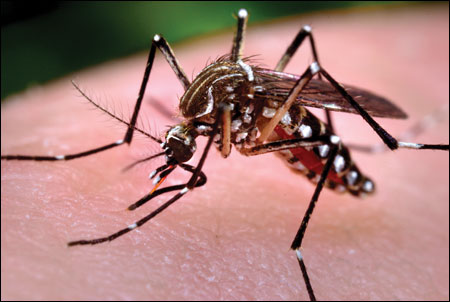Chikungunya spreads to Turkish mosquitoes
Chikungunya has been detected for the first time among Turkish mosquitoes, while West Nile virus and other mosquito-specific flaviviruses and alphaviruses also continue to proliferate in the region, according to data presented at ECCMID 2016.

Figure 1. The Aedes aegypti mosquito is one of the primary vectors of chikungunya. However, the virus has been detected in other mosquito species in Turkey.
Source: James Gathany, CDC
Previously reported data has described the prevalence of mosquitoes carrying West Nile virus (WNV) and other viruses to be increasing throughout various regions of Turkey, the researchers wrote, and often are concurrent with the emergence of case clusters. In addition, data presented at the same conference in 2015 also detailed the spread of WNV in neighboring Greece from 2011-2014.
To investigate WNV and other mosquito-borne flaviviruses and alphaviruses in Turkish regions with increased residencies and refugee travel, the researchers sampled mosquitoes between June 2015 and August 2015 in the Aegean, Mediterranean and eastern Thrace regions. Captured using CDC light traps, the specimens were pooled and subjected to nucleic acid purification and cDNA synthesis after homogenization. Alphaviruses and flaviviruses were detected using generic nested and real-time PCR, with mosquito pools determined to be positive characterized by amplicon sequencing.
The researchers collected and analyzed 4,105 specimens, the majority of which were obtained in eastern Thrace. The most prevalent species detected among these were Aedes caspius (61.2%), Anopheles maculipennis sensu lato (19.1%), Culex pipiens sensu lato (13.7%) and C. theileri (3.3%). All specimens were consolidated into 188 pools for the analysis.
Alphavirus PCRs revealed positive results within two of the analysis pools, while flavivirus PCRs detected eight positive pools. Specimens in the alphavirus-positive pools were found to be carrying chikungunya virus — the first detection of the disease in Turkey. Diseases identified in the flavivirus-positive pools included WNV lineage 1 clade 1a, Mediterranean Culex Flavivirus and Mediterranean Ochleratatus Flavivirus.
“Despite detection in mosquito species with limited vector potential, appropriate surveillance and diagnostic measures should be undertaken to monitor virus epidemiology and potential emergence of human cases,” the researchers wrote.
References:
Ergunay K, et al. Abstract 1298. Presented at: European Congress of Clinical Microbiology and Infectious Diseases; April 9-12, 2016; Amsterdam.
Mavrouli M, et al. Abstract P0635. Presented at: European Congress of Clinical Microbiology and Infectious Diseases; April 25-28, 2015; Copenhagen, Denmark.
Disclosure: Infectious Disease News was unable to determine relevant financial disclosures at the time of publication.
